

ADDED to the FILE

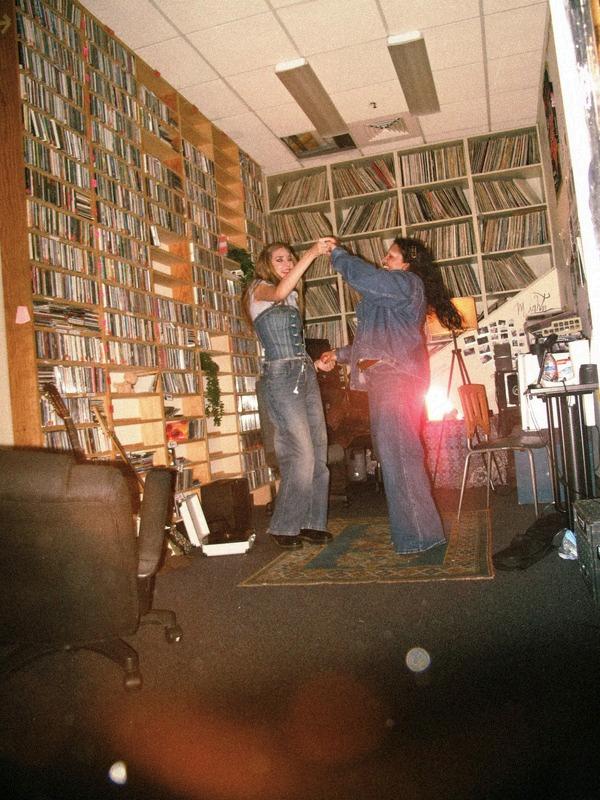
How do we find ourselves in music?
A LETTER FROM THE EDITOR
It is my incredible honor and privilege to introduce to you Added to the File Magazine’s fourth issue, “Instrumental.” This can only be described as a labor of love – one that we are all so thankful to be able to share with you today
“Instrumental” first came about at Songbyrd Music House in December 2024, when Lindsay Khalluf, co-founder and then Creative Director of ATTF, and I wandered over to a student band showcase from GW’s radio show. In between sets, we admired the fashion choices of the packed house and the musicians alike Each act exuded style – with their clothes and music reflecting so clearly their artistic personalities. From there, Lindsay and I talked at length about the role music played in our lives, in the ways we viewed ourselves and the world around us And so “Instrumental” was born
“Instrumental” can best be understood as an exploration of our engagement with music. The first three shoots embody music as a connecting force between family and strangers alike, as well as a deeply personal avenue for self-expression. When flipping through these, we encourage the reader to consider how their music taste influences their relationships and personal style. The next two shoots are tributes to artists who so clearly embrace the connection between their music and fashion: King Krule and Bob Marley. Though they are two vastly different artists, their appreciation for clothing as an expression of self shines through their work. The final four shoots explore the dynamism of music and fashion more broadly across time. First, with our tribute to classical music, we celebrate the beauty in the simplicity of music itself Then, in our extended “Decades” photoshoot, we explore the connection between music and fashion across four wildly different genres and decades. In every period, we can find a deep connection between music, fashion, and selfexpression. Now, we can only ask what’s next?
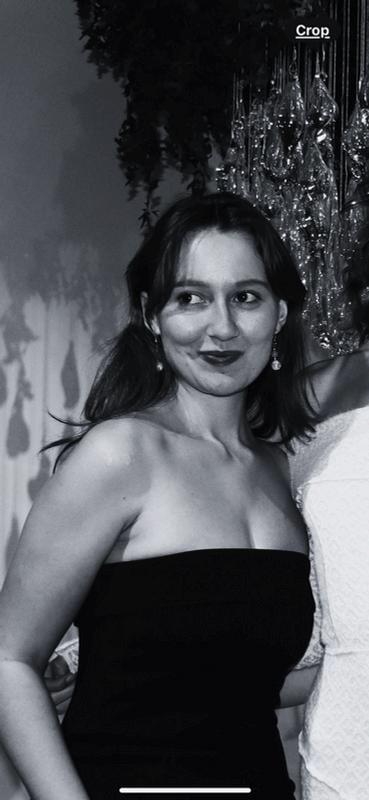
On a more personal note, I would like to send my endless love and gratitude to the people of Added to the File. I joined this incredible organization as a photographer when it was founded in 2023 and instantly fell in love with the artistry and dedication of everyone involved I would like to specifically thank Lindsay Khalluf and Leila Hamdan, not just for this beautiful creative community you have fostered, but for this incredible friendship we have developed keeping this magazine afloat. Also, to the photography team that I have been able to grow alongside, I thank you endlessly for allowing me to bear witness to your talent and artistry. Lastly, to the incoming leadership team – Isabel, Manya, and Brady – I wish you luck in continuing on, and please be assured that there is no one else I would rather leave this magazine to
I had the hardest time choosing which photo of myself to include for this letter. Maybe one from a photoshoot? My board photo? A formal headshot? Then, I found this one – a shot of me at our very first launch party, swelling with pride for what we had accomplished Standing there in De La Cruz Gallery, celebrating our second issue alongside dozens of the imp Georgeto and I can have play with prid issue, no better.
I began t so excited


MEET THE BOARD
Director of Operations
Leila Hamdan



Treasurer Charlotte Bonneau
Director of Design
Heidi Kwak



Director of Writing
Julianna Penna
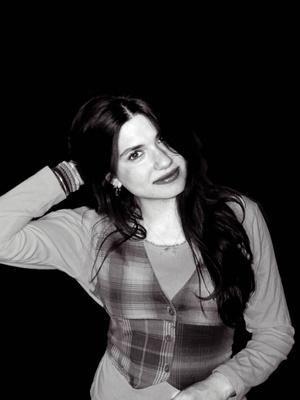


Director of
Alexandra Dassopoulos
Director of Social Media Jiwoo Park
W H A T ’ S
creative direction: zarin rizvi
creative assistance: lindsay khalluf
photography: liz esteves, zoe frantz
makeup: isabella pamias, zarin rizvi
wardrobe: anika lippke, abdur rahman
models: julianna penna, brady stoffregen, alison karki, lauren strobl
graphic design: jaimie koh
writing: emma garcia
creative direction: manya dyer
creative assistance: lindsay khalluf photography: brady stoffregen, zoe frantz, quisha lee
makeup: mara goldstein, isabella pamias
wardrobe: isabel liu, karan patnaik, anika lippke, gabby hogrefe
models: madeline burns, dia chawla
graphic design: quisha lee
writing: madeline burns, jayla wideman
➤TRACK THREE - YOU’LL SURVIVE THIS, BUT NOT UNALTERED
creative direction: heidi pan
creative assistance: madeline burns
photography: madeline burns, manya dyer, brady stoffregen
wardrobe: madison walter
models: bahar hassantash, sasha jayne, dhiya dhandapani, marlee ryan, anika lippke, saeed samra, makenna dovel, almitra guart, manya dyer graphic design: gabby hogrefe
writing: olivia pozen ➤TRACK FOUR -
creative direction: samia adjei
creative assistance: lindsay khalluf photography: mia deschapelles, julian huang, quisha lee
makeup: mara goldstein
wardrobe: karan patnaik, isabel liu, thandiwe chikuhwa
model: jaden sarr
graphic design: heidi kwak
writing: julianna penna
creative direction: samia adjei
creative assistance: madeline burns photography: mia deschapelles, brady stoffregen, madeline burns makeup: zarin rizvi, mara goldstein wardrobe: madison walter, abdur rahman models: taylor moses, noah young graphic design: heidi kwak writing: annie quimby
creative direction: anna lynn, zarin rizvi
creative assistance: madeline burns photography: julian huang, mia deschapelles, brady stoffregen makeup: zarin rizvi dress design: georgetown restitch styling: isabel liu models: sophia fife, arisa tyler graphic design: kate nugent writing: christina pan, julianna penna
TRACK SEVEN
creative direction: manya dyer, anna lynn, samia adjei, zarin rizvi creative assistance: madeline burns photography: quisha lee, liz esteves, brady stoffregen, zoe frantz makeup: isabella pamias wardrobe: madison walter, anika lippke, thandiwe chikuhwa, bracie aston models: marre gaffigan, max dubin, manya dyer, kayla pickett, sofia safa, thandiwe chikuhwa, frances ovadje, grant rabin, madison spitzer, lahari lingam graphic design: madeline burns, lindsay khalluf, manya dyer writing: manya dyer, anna lynn, samia adjei, zarin rizvi
MASTHEAD EXECUTIVE AND CREATIVE DIRECTOR: MADELINE BURNS CREATIVE ASSISTANT: LINDSAY KHALLUF DIRECTOR OF OPERATIONS: LEILA HAMDAN DIRECTOR OF MARKETING: ALEXANDRA DASSOPOULOS DIRECTOR OF DESIGN: HEIDI KWAK DIRECTOR OF WRITING: JULIANNA PENNA TREASURER: CHARLOTTE BONNEAU DIRECTOR OF SOCIAL MEDIA: JIWOO PARK MANAGING EDITOR: MANYA DYER
spring 2025 cohort: anna lynn, heidi pan, samia adjei, zarin rizvi, liz esteves, zoe frantz, julian huang, quisha lee, mia deschapelles, gabby hogrefe, quisha lee, jaimie koh, kate nugent, dhiya dhandapani, maggie sansone, olivia scharf, boa seo, claire buchanan, florence cheung, sharon xie, kayla eng, hadisa ghulami, candy zhou, abdur rahman, jaxon farmer, karan patnaik, bracie aston, anika lippke, isabel liu, thandiwe chikuhwa, madison walter, mara goldstein, isabella pamias, meena ghobadi, camille stephant, alessia turner, ellie hill, adey adeleye, christina pan, jayla wideman, emma garcia, annie quimby, olivia pozen, manya dyer, jiwoo park, charlotte bonneau, julianna penna, heidi kwak, alexandra dassopoulos, leila hamdan, lindsay khalluf, madeline burns
A




















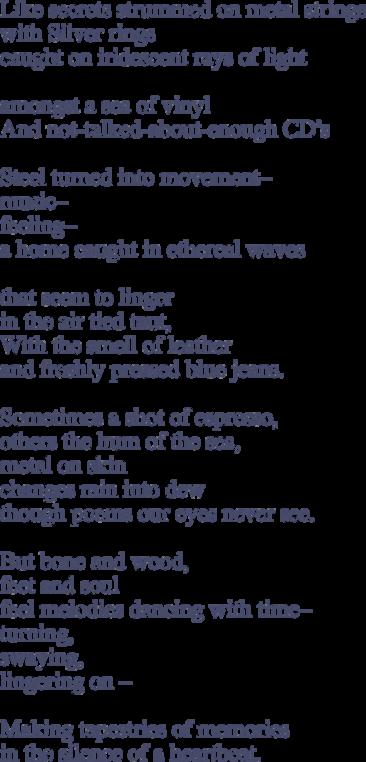


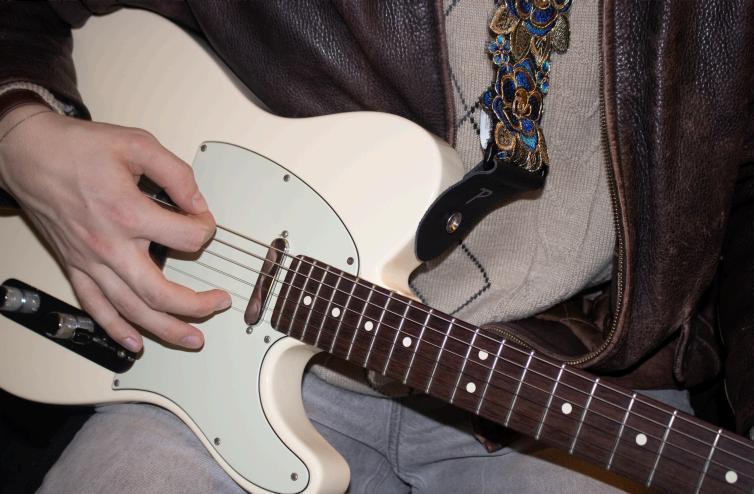





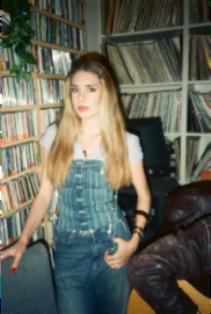


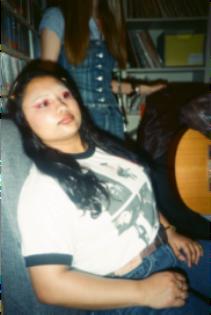





MY DAD’S

ROCK CD
Jack White first introduced me to CDs. My parents moved to Nashville around my age, drawn to the music and the electricity of the city. By the time they had me, they were well versed in Nashville’s music scene, frequenters of pop-up live music shows and underground record stores. Jack White’s record store, Third Man Records, has been a Nashville staple since 2009, and so it became a staple of my childhood. My parents would grab me out of school early every now and then to go wait in line for the newest record drops. I spent hours outside that store with some of the biggest music lovers in the city, waiting to buy the newest records from up-andcomers and legends alike Waiting outside that line one day in 2014, I bought my first CD for myself: Jack White’s Lazaretto. He signed it for me that day.
Then I switched to digital media. It was me and my iPod touch against the world. Then came Apple music, then Spotify, and I had completely forsaken the ancient art of physical media. But my senior year of high school, I considered a return to my roots… I put my old Jack White CD into my car and got to experience the joy of CDs once more The sound quality hit so much harder, and I swore I wouldn’t go back.
I began building up my collection once I came to college. Almost every week, I find myself at Smash Records in Adams Morgan, combing through their vintage CDs looking for my next great find. I get to experience artists I’d never heard of before just by asking for suggestions from the shop owner and taking risks on the album cover I think looks cool CDs now line my wall in no particular order. Though they’ve been an absolute pain to move from dorm to dorm, my CDs bring life and memories to my room. After I started collecting CDs, my dad asked if I wanted to flip through his old CDs to see if there were any to add to my collection. I was shocked There he was with dozens of CDs from the 90s and 00s in the exact genre I was looking for, and I was just now hearing about them. He started collecting them at my age.
Nearly a hundred CDs of my favorite artists Pixies, CAKE, Alice in Chains, The Breeders, The Raconteurs, the list goes on. He had them kept in one of those old flip books with four CDs to a page: “easier to move that way” While it was certainly efficient, no cases meant they couldn’t join my CD wall, with each CD clearly displayed and easily accessible in their respective cases. I’ve since been on a mission to replace the cases,
searching for empty CD cases and, with my limited artistic skill, recreating the album covers. Of course, I could just go find the album at a record store, make sure the CDs I have align with the rest of the collection on the wall and look all neat and presentable But I think there’s something to say about honoring my Dad’s CDs in the condition I found them in He listened to these exact CDs at my age, found them in their original release at his local record store, and now I get to experience them as he did. More than that, I get to go through each one and put my own spin on them. Now, when I pass these on to whoever’s next, I pass on more than just the music, but a glimpse of both of our experiences with the music at the time we first heard it I get to share my 20s, just like he shared his.
I like to think our music taste connects us to generations past, which makes my CDs family heirlooms. Of course, our tastes shift, become molded and refined over time. My taste has certainly grown the more CDs I buy and artists I’m exposed to But that’s the beauty of heirlooms: they’re snapshots of who we were at certain points of our life The beauty lies in the time and place they were chosen, cherished, and saved for later.
HEIRLOOM
MADELINE
BURNS
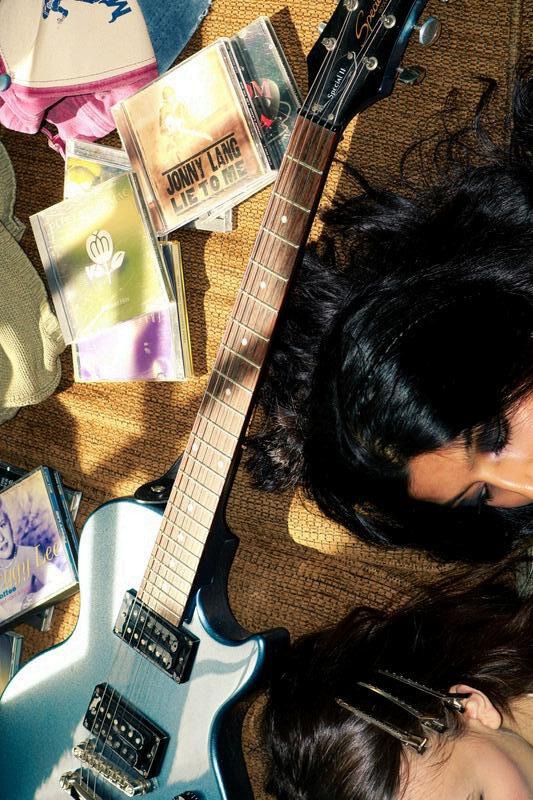

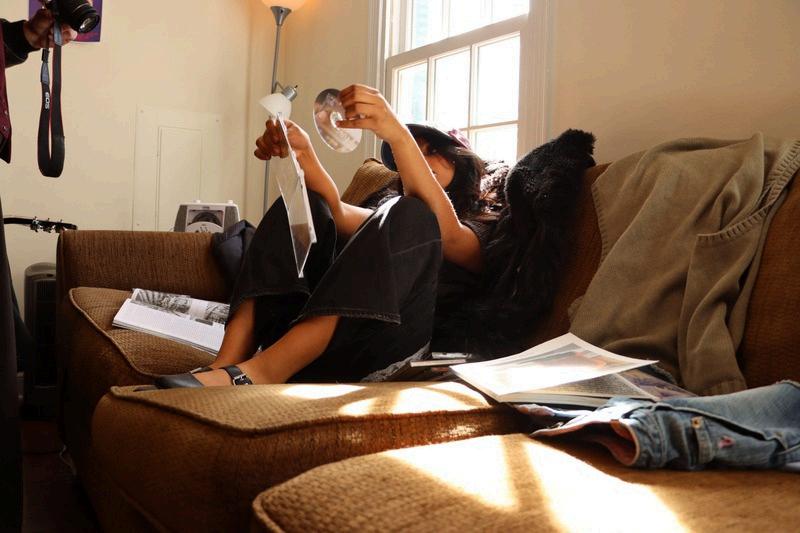


b y j a y l a w i d e m a n
R E B E L H O M E C O M I N G

your dad’s CD collection feels like red mustangs driving donuts in dark parking lots like dark red lipstick and records that pop and crackle like lighters and stolen cigarettes
long summer days spent sneaking them out of the cabinet in the garage, blasting them on the radio in your mom’s old car, while you drive endlessly on the highway
some sort of false rebellion; the black clothing and eyeshadow alarms your parents, but in truth you’re going back to your roots. the chords of the guitar echo some forgotten song, its rhythm the beat that your heart thumps against your ribs


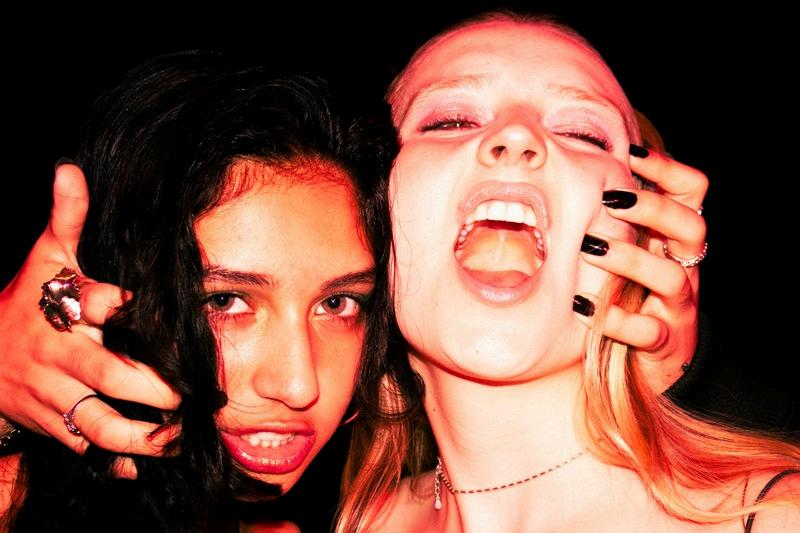
YOU MAY SURVIVE THIS

darting eyes piercing skin evading smartphone glare and onymity barring one maybe a few invisible man lap up the frenzied entropy while the effervescence latches onto the tip of your tongue one looks to many few turn to one slip outside and forego obscurity to the man with the infrared extended suck it up
YOUR NIGHT FOR A SMALL FEE, NEXT TIME?
by manya dyer
B U T N O T U N A L T E R E D


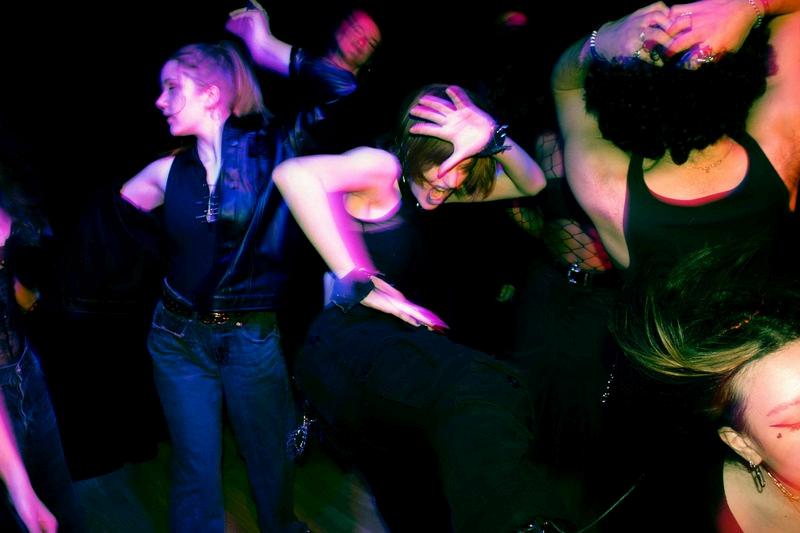

by olivia pozen
Coachella has become just as much a fashion show as it is a music festival and there’s nothing internet users love more than giving their unsolicited style advice. In 2025, James Charles’ shimmering off-the-shoulder tank was swiftly deemed a miss by the masses, while Zoi Lerma turned heads in a strappy, belt-laden leather ensemble Commenters claimed that Charli D’Amelio is “bringing fringe back”; lace, on the contrary, will always be in style These swirling claims may seem isolated to Coachella it’s a cultural phenomenon, after all but ultimately speak to a shift in American fashion trends. The American public is creating its own “rave culture,” centered around the music festival scene and increasingly hip and exclusive big-city clubs.
Yet, these wannabe Berghein entrants seem to miss the point of rave culture and fashion entirely. They sport skimpier, monochromatic clothing and conform to a Euro-chic outing aesthetic without an understanding of raving as grounded in loud and unapologetic self-expression and respect for others Rave music a subsect of electronic dance music (EDM) originated in the United Kingdom in the late 1980s and rose to prominence as a facet of all-night warehouse dance parties and the underground club scene Ecstasy was king The restrictions of traditional disco clubs, which once reigned supreme in popular culture, were null and void.
Rave fashion, as such, was originally oriented around practicality. In the
early 1990s, wide-legged JNCO jeans and phat pants certainly looked cool when wearers danced and spun in circles, but they also were flush with pockets and side-zippers to store their belongings. Baggy pants also create a sort of “floating” illusion, obscuring the bodies of anxious or bad dancers and encouraging all ravers to participate regardless of their natural talent Ravers similarly wore t-shirts made of lightweight, breathable materials Comfort superseded style, undermining the modern notion that rave clothing must be complex and restrictive Moreover, these items are often expensive statement items that individuals are rarely able to reutilize, making the present-day music festival aesthetic financially difficult to achieve.

Despite this emphasis on comfort, rave fashion simultaneously encourages self-expression above all else. The original ravers wore graphic tees decorated with bold slogans or animal prints, as well as pants of all imaginable colors. Accessories such as visors (a la Daft Punk) and bucket hats offer a sense of anonymity to participants who may prefer not to draw attention to themselves while still engaging in rave culture all the same In this way, what distinguished early rave fashion from other subcultures was its democratic nature There was no “right way” to dress; individuals should dress as their authentic selves, however loudly or quietly that may be This philosophy stands in stark contrast to today's highly curated, Instagram-ready festival outfits that emphasize conformity and trendiness over eccentricity.

Commercialization thus presents a challenge to the individuality and equity encouraged by rave, which touts core values of Peace, Love, Unity, Respect, and Responsibility (PLURR). In response, Kandi trading remains a means of protest against exclusionary practices and a reversion to rave’s original principles. Kandi are small bracelets, cuffs, or necklaces often made of beads or perlers that people trade at rave events and festivals Think Taylor Swift Eras Tour bracelet trading or the backalley Silly-Bandz deals you made in middle school Ravers often view Kandi as a creative outlet, a means of sharing their artwork and forging connections with crowds of individuals they may never meet again. In turn, trading Kandi requires courtesy and a sense of due diligence. It is considered disrespectful to request Kandi without engaging in conversation Kandi is about fostering interaction just as much as it is about the object.
The true spirit of rave culture isn't found in perfectly curated Instagram posts or VIP sections of music festivals, but in the communal joy of movement, music, and mutual respect. In this manner, I call out Added to the File. Rave is not a secret endeavor or an opportunity to wear black and make brooding expressions near a camera. In fact, rave is often opposed to photography and modern technology as a whole, as either a distraction or, more importantly, an invasion of attendees’ privacy In this moment, we face a choice between embracing the authenticity of early rave fashion or surrendering to the commodification of rave culture I hope we look to rave as radical and make the right choice.


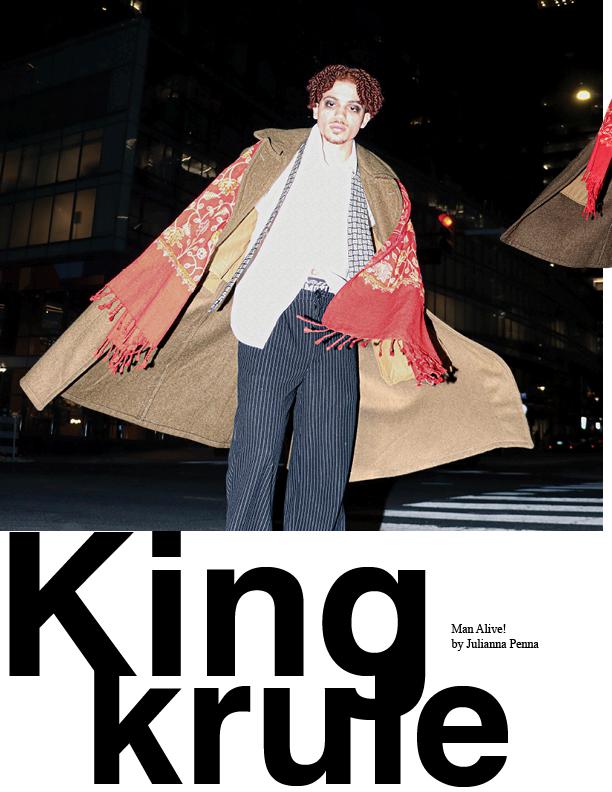





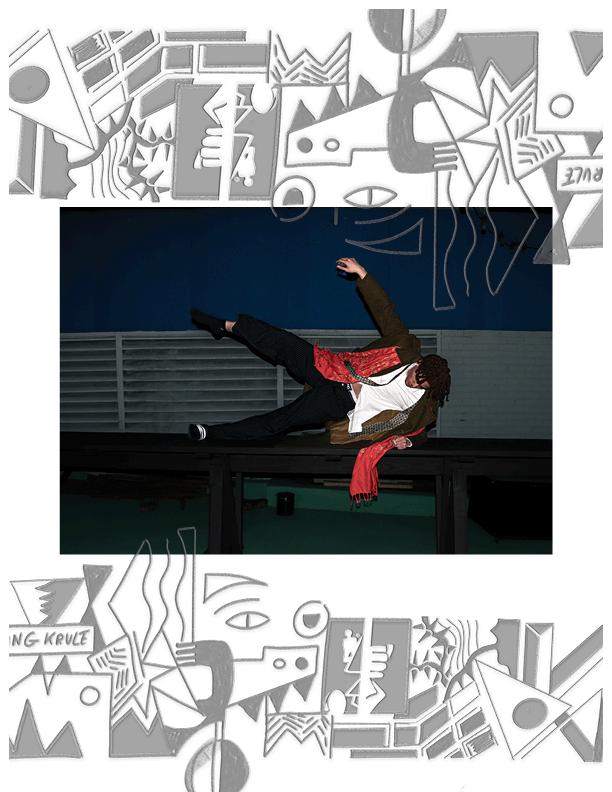
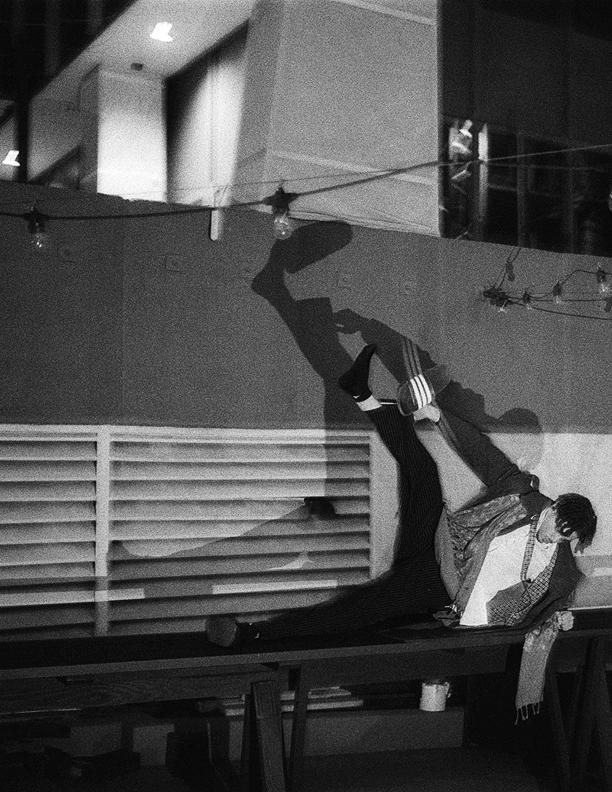



Bob Marley, Reggae, and Denim: Breaking Boundaries by Annie Quimby


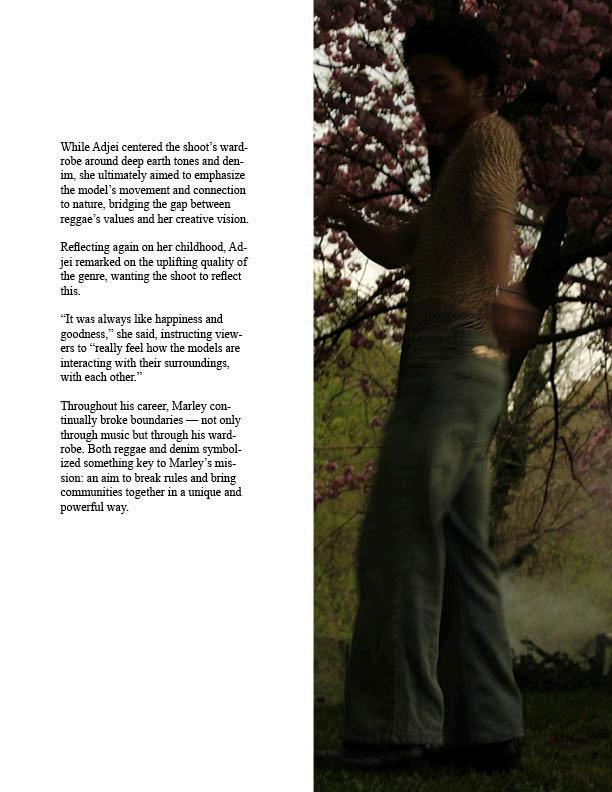



Eighth Note, Half Note

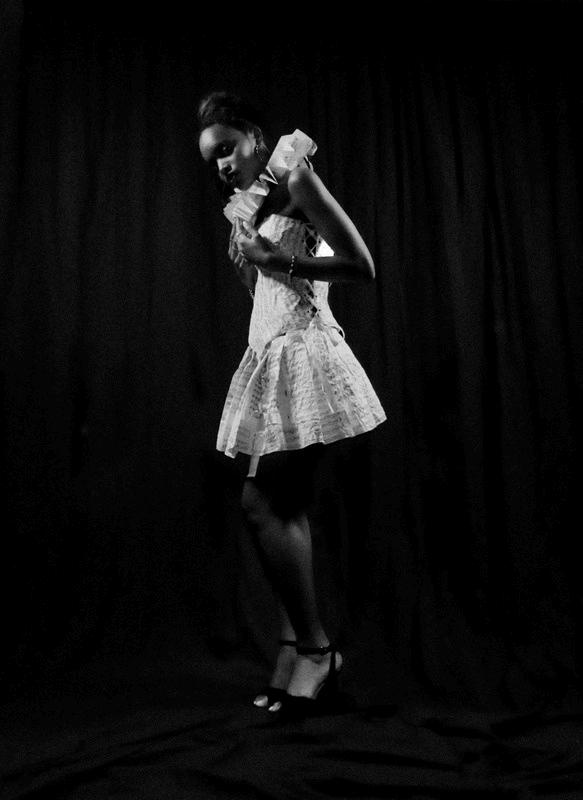

“Why do you play this sort of music, if you know how every piece ends?”
I know that all the notes and melodies are predetermined. In classical and composed music, there’s such a high bar to just playing the music and so many opportunities for mistakes why keep such an uptight focus on the score? I think this type of music is simply the objective expression of subjective emotions It’s the clean articulation of something buried within the psyche. And beyond mental abstractions, I love seeing musicians’ bodies in motion. Like geometric figures coming to life. The instrument rearranges the musicians’ arms and legs around wood and steel just as much as their fingers are manipulating strings and bows; the musician is being played as much as the instrument is Violinists casting dark triangular shadows with their right arm positioned precariously high up on the strings, neck bones and jaw angled in sharp relief. The hunchbacked posture of cellists, all four limbs swallowed by the instrument. Double bassists sawing into strings, their biceps working overtime. Hands start to grow wooden like the instruments Pinkies growing stronger, calluses growing thicker Tendons stretching and contorting; ears quick fire; applause thundering in the concert hall. Bowing to the floor; hair falls into the eyes; then silence ringing in the ears.
by Christina Pan

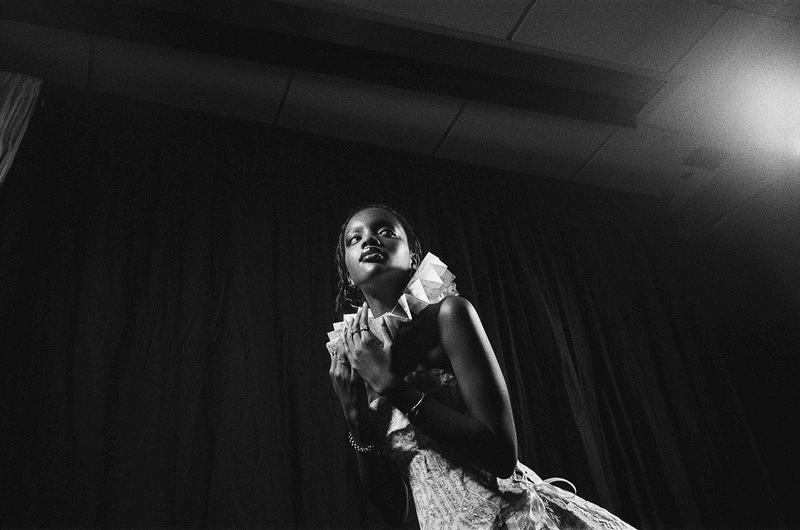

Reading a manual language We breathe with our fingers Through the keys and the pedal Or the bow and the string
Sometimes we find ourselves Desiring dissonance


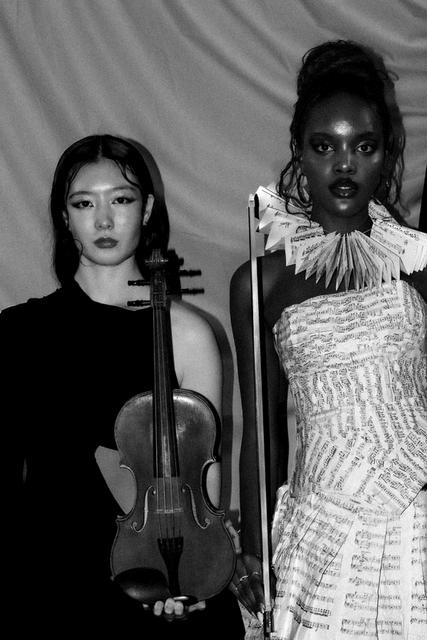
In this music box You may find A natural catharsis Blooming with an elegance Missing from the digital
When did analog go out of style?
Silver and gold
Watches are back
To accessorize
Record players
Sit on teenage desks
Collecting dust

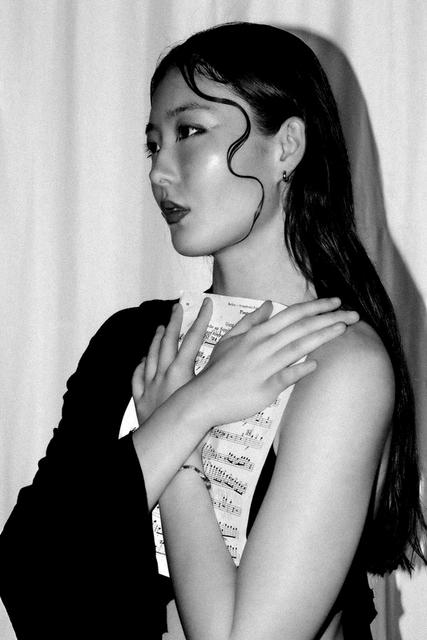

Still the piano keys
Will be warm to the touch
We’ll come back home
Day after day
To the sound of a-flat major
by
Julianna Penna
The Seventies













Glam Rock and Fashion In the Era of David Bowie and Twiggy
by Manya Dyer

One cannot consider the 70s without acknowledging that which came before; it did not exist in a vacuum
The boldness, the glamour, the confrontation of a new pace of life in a post-war era amidst a generationwide search for a sense of belonging and fresh identity. Chasing the momentum sparked by an electric cultural revolution, the 70s was about finding the line and then electing to step over it.
Bowie and Twiggy evolved in this vein, entering the 70s already recognisable by homonyms, riding the wave brought about by the scaffolding of their own respective stardoms in music and fashion.
The convergence of their spheres was immortalised in print upon the union of Bowie and Twiggy on the cover of the former’s 1973 album, Pinups Nude, neither were portrayed in the notable styles that became associated with their respective personas, but this choice – to me – signalled a sense of coalition and equality across music and fashion at the time.
A sense of intertwinement is conveyed within the poses of this shoot, with models leaning on one another and limbs interlinked. Culture commands a mutual sense of reliance on the different components which make it up, and artistically this is no different.
Bowie’s artistry stood out across the eras he spanned for the unconventionality of his lyrics and mode of dress Seeking a new lens through which to tell stories, he oft looked to space and the supernatural as a narrative vessel. Thematic similarities certainly existed in the music created by his contemporaries, but Bowie’s mission to seek innovation in his art provides a layer of obscurity, depth, and complexity to an untrained ear. He addresses escapism and the peculiarities of life from a differentiated perspective of the individual and the absurdity within one’s own mind rather than defining such as it relates to one’s relationships with others
His different styles of dress accompanied the creation of a new ego, often coinciding with a style change in his albums Consequently, Bowie maintained a theatrical and ever-metamorphosising persona during his time. In combining aspects of different phases of his dress, as well as features such as androgyny and layering that are held across some of these phases, the shoot features three outfits which seek to span a broader selection of his couturial representations and makeup looks, incorporating features unique and recognisable to Bowie and Twiggy.


R R o o c c K K O O N N


by anna lynn
The 80s was the pinnacle of pop culture, with fashion, music, and movies dominating every aspect of life Life became dominated by an influx in mainstream media, where one could not escape the latest trends in fashion and music which became larger than life almost overnight The world became dominated by neon colors, shoulder pads, big hair, and boomboxes broadcasting a constant stream of the newest music. But the rise of a mainstream culture of jazzercise and pop music meant the need for an alternative style, subversing and rebelling against a uniform, neon society. The world needed more grunge, the world needed some punk rock.
Punk Rock emerged as a music genre and cultural movement in the mid-1970s and expanded in the 1980s Punk fit into the larger than life way of the 80s, expanding upon the idea of more is always better Punk music was defined by its short, fast-paced songs with rough melodies and singing, a distinct difference from the uniformity of pop music The genre became a prominent subculture as its lyrics rebelled against mainstream culture and society. Instead of love songs and upbeat lyrics, punk created a space for anti-establishment and antiauthoritarian themes. Bands self-produced their music, allowing for unique sounds uninhibited by labels wanting to stick with what was popular.
Punk became the epitome of expressing freedom, authenticity, rebellion, and a need to step outside the constraints of mainstream society But people needed a way to express these feelings of rebellion in other ways, so they turned to fashion
NThere is no better way to express one’s personality than through their clothes So, punk fashion exploded along with the music genre
Punk fashion openly rejected mainstream fashion norms, emphasizing individuality and rebellion Neon, athleisure, shoulder pads, and high waisted jeans were exchanged for chains, leather, plaid, fishnets, and spikes. Punk fashion was characterized by ripped clothing, tartan kilts or skirts, leather jackets, and Dr. Martin's boots. The punk aesthetic also included hair, either shaven, mowkaws, spiked hair, or extremely teased hair that was bleached or dyed bright colors. Big hair being an 80s theme that no subculture could disregard. Punk rock fashion lives on in today’s trends as ;legendary designer Vivienne Westwood helped to create the look of British punk, designing clothing for the band Sex Pistols
Punk music and fashion meant freedom and individual expression These are the themes which I wanted to highlight in this shoot. The shoot highlights the quintessential punk elements of plaid skirts, fishnets, metal, and leather. The models exude the vibes of punk with messy hair and fluid movements, unafraid to break free of societal norms, move around, and fully express themselves. Ultimately punk is about being yourself (in leather and chains) and finding a community of acceptance. There is no punk music without its fashion, and ultimately there is no 1980s without the punk rock movement Punk ensured that the 80s were cemented as the pop culture decade, with a lasting impact on music and fashion that is all around us today




R O C K + H I P H O P
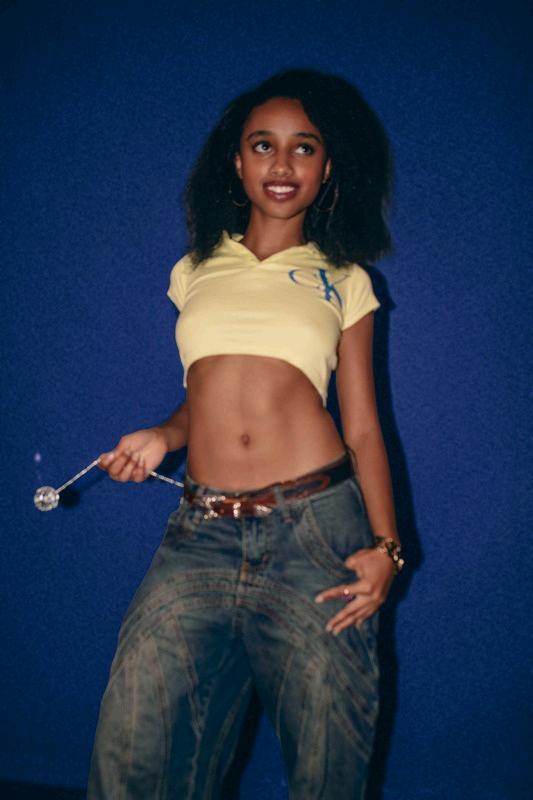
ROCK+HIP HOP ROCK+HIP HOP ROCK+

When thinking about the role music has played in my life, my mind goes back to being a kid in front of the TV, swinging a Wii remote to “Walk This Way” by Run-DMC featuring Aerosmith. In the game’s visuals, the two groups (one representing hip hop and the other rock) stand on opposite sides, taking turns in a dance-battle-like scene

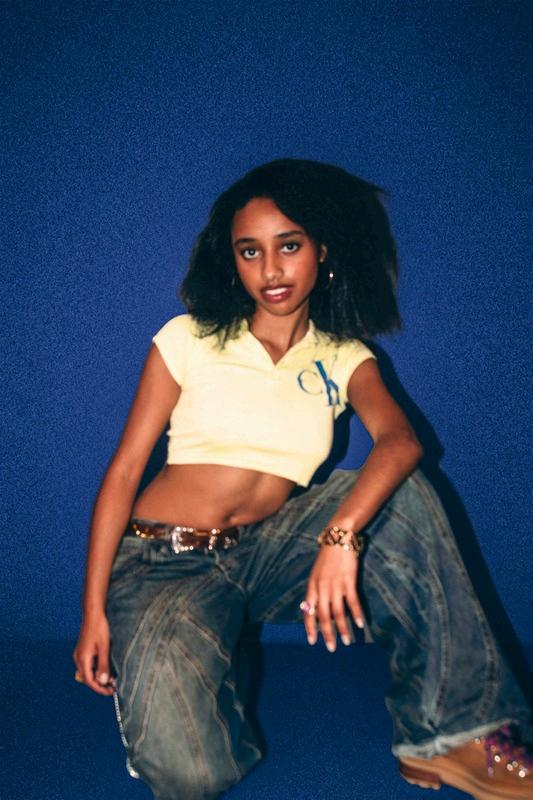
HOP ROCK+HIP HOP ROCK+HIP HOPROCK+HIP HOPROCK+HIP HOPROCK+HIP HOP
That stuck with me: two genres portrayed as oppositional— Black versus white, new versus old, urban versus suburban— competing for cultural dominance.
What inspired this shoot was what the game’s visuals left out: the resolution in the actual music video By the end, Run-DMC and Aerosmith aren’t battling, they’re performing together. This collaboration between the two genres captures the broader role hip hop and rock played throughout the 1990s: not in competition with each other but rather as parallel counterculture movements rejecting mainstream norms, amplifying marginalized voices, and challenging institutional power.
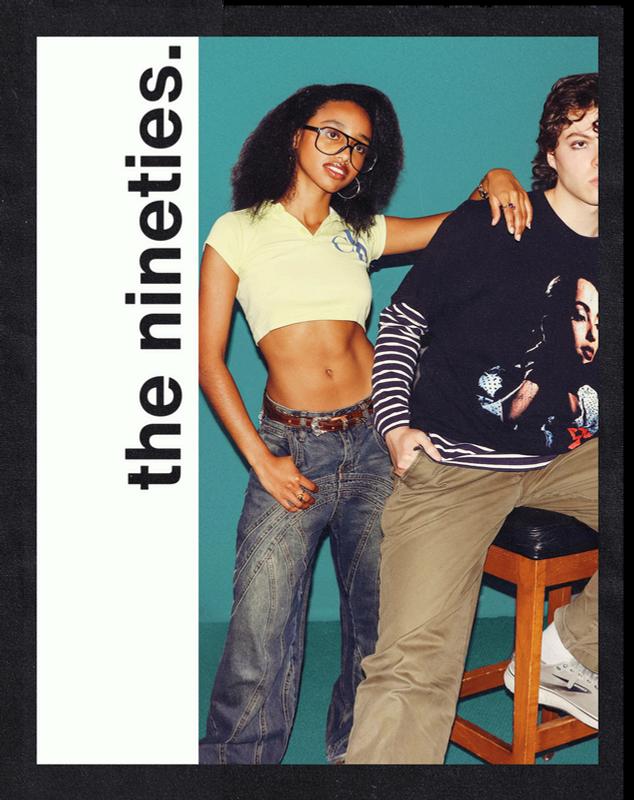
Rock music, since its emergence in the mid-20th century, was defined by rebellion. Even as it became more commercially successful, it held onto anti-authoritarian themes. Punk, grunge, and metal all conveyed their own critiques of capitalism, war, and society at large, and its artists gave voice to disillusioned youth, particularly its white working-class listeners In contrast, hip hop has its roots in Black and Latino communities in New York, and by the 1990s, it had become a national and increasingly global force Hip hop took the topics rock discussed and expanded on it with a focused lens of a community confronting police brutality, mass incarceration, and the experiences of inner city life.
So, while rock and rap had different origins and aesthetics, neither genre was just about entertainment. Instead, they were linked by a deeper purpose of protest, and in the 1990s, served as respective channels for political expression, cultural affirmation, and calls to action. Thus, their immediate crossover became inevitable. Beyond “Walk This Way,” the decade gave us Rage Against the Machine, a hybrid of rap and metal; nu-metal acts like Linkin Park and Limp Bizkit; and artists like the Beastie Boys and Ice-T who blurred lines in a way that were both genre bending and racially transgressive
The genres grew alongside each other as the alternatives to pop, both serving as outlets where the topics the mainstream avoided or sanitized could be had Despite this, because of their framing as diametrically opposed, their intertwined existence is erased and the idea that they exist in conflict ignores decades of mutual influence and crossover In 2017, hip hop officially surpassed rock as the most popular genre in the United States, according to Nielsen’s year-end music report, a shift that reflects not a victory of one over the other, but the culmination of their shared evolution. This false sense of opposition, and the forgotten intersections between the two, became the inspiration behind this shoot: to challenge those binaries and reflect on how both genres have shaped countercultural expression, often in dialogue rather than in isolation.
The photoshoot draws on these themes Initially inspired by that visual tension from Just Dance’s “Walk This Way,” I wanted to portray hip hop and rock not as opposing forces, but as parallel lines that converge.

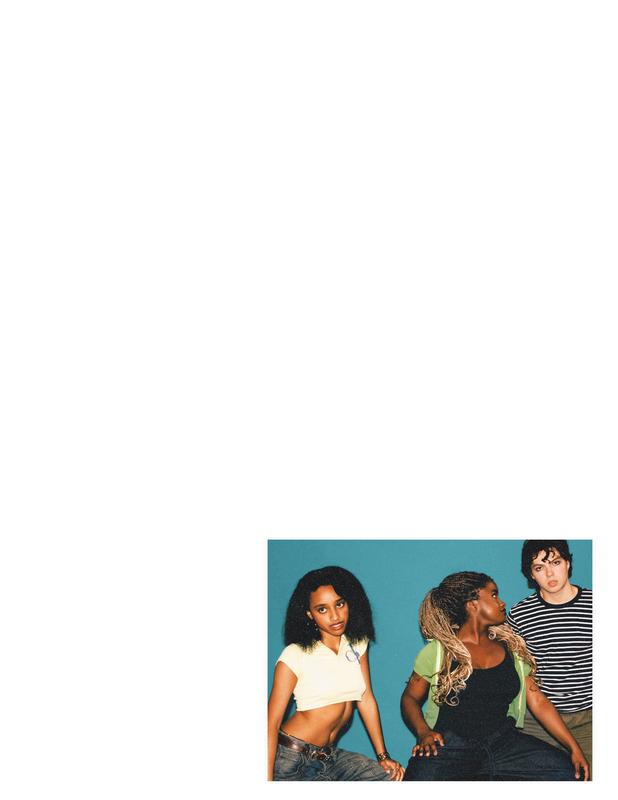


the‘00s the ‘00s



























THERE WAS SOMETHING CHAOTIC BUT DEEPLY INTENTIONAL ABOUT FASHION AND MUSIC IN THE 2000S. IT WAS A DECADE WHERE EVERYTHING FELT OVER THE TOP: TOO MANY ACCESSORIES, GLITTER ON EVERY SURFACE, LOW-RISE JEANS THAT BARELY HUNG ON, AND P PACKED WITH AUTO-TUNED H FOR A GENERATION GROWING U DIAL-UP INTERNET AND DIGITA THAT NOISE WASN'T JUST FO ACTUALLY MADE SENSE.
POP STARS DIDN'T JUST CULTURE, RATHER THEY W CULTURE. BRITNEY SPEARS WA DISTANT CELEBRITY. SHE WAS O IN YOUR LOCKER ON THE R LATER, ACRO EVERY OUTFI SAME WITH NICOLE RICH HINDSIGHT ALL THE TIM SHAPED HOW RHINESTONE TRACKSUIT B WHO YOU WA
FASHION IN ATTENTION. SHOWED SK OUTFITS WE DELIBERATEL HAD CONFID WORE THING IN MUSIC V MADE PRACT TECHNOLOGY CONSUMED S EXIST YET, ALREADY TA SEARCH WAS WANTED TO DRESS. SUD WERE SEARC BUY A MAGA HAD TO BE ON BLUEPRINTS, STUDY, RECR BY BEING CA FABRICS, RH CAUGHT LIGH PIXELATED S BLURRED TH FASHION AN SOMEONE W THE AIRPORT




THE AESTHETIC CARRIED A BRIGHT OPTIMISM. CHROME ACCESSORIES, PLASTIC JEWELRY, GLOSSY EVERYTHING. IT WAS LIKE DRESSING FOR A DIGITAL FUTURE THAT HADN'T FULLY ARRIVED YET. PEOPLE WORE THE FUTURE THEY IMAGINED, EVEN IF THEYCOULDN'TQUITEDEFINEIT.
BUT THE 2000S WEREN'T ALL ABOUT THE NEW. THEY ALSO LOOKED BACK. BOHO-CHIC STYLED BY PEOPLE LIKE MARY-KATE AND ASHLEY OLSEN OR SIENNA MILLER, REWORKED '70S SILHOUETTES WITH LAYERED SCARVES, SKIRTS, AND FRINGE. PUNK AND GRUNGE AESTHETICS MADE COMEBACKS TOO LIKE STUDDED BELTS AND DARK EYELINER, BUT STYLED FOR THE MALL INSTEAD OF THE MOSH PIT. THIS MIX OF PAST AND FUTURE CREATED A SENSE OF FREEDOM: FASHION WASN'T FOLLOWING ONE PATH, IT WAS PULLINGFROMEVERYWHERE.
AND MUSIC CARRIED THE SAME ENERGY. ARTISTS LIKE USHER AND DESTINY'S CHILD WERE BUILDING SOUNDS AND STYLES AT THE SAME TIME. THEIR ALBUMS WERE SETTING THE TONE FOR HOW PEOPLE TALKED, DRESSED, AND DANCED. THERE WERE LOVE SONGS AND PARTY ANTHEMS, BUT ALSO STORIES ABOUT POWER, HEARTBREAK, INDEPENDENCE. IT WAS EXPRESSIVE IN A WAY THAT MATCHED THE FASHION AROUND IT: BOLD, UNAPOLOGETIC, AND OFTEN COMPLICATED. AND AS PRODUCTION TOOLS LIKE AUTO-TUNE AND PRO TOOLS BECAME MORE MAINSTREAM, THE MUSIC ITSELF BECAME MORE POLISHED AND FUTURISTIC MATCHING THE GLOSSY, MAXIMALIST AESTHETICTHAT
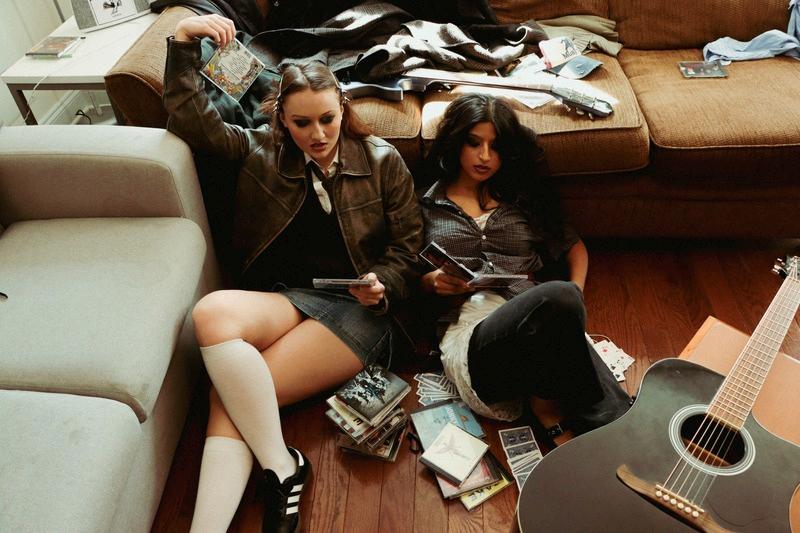
Founded in the 2023-2024 school year, Added to the File (ATTF) is Georgetown’s first fashion photography magazine It publishes two issues per year, with each issue centered around a “theme” that is explored through writing, fashion, photography, and other forms of visual artwork.
ATTF is dedicated to providing a creative space on campus for multidisciplinary collaboration and artistic expression. It was founded as a unique, artistic niche on campus for students to destress and be vulnerable through a variety of creative outlets
Through our publication, we aim to facilitate discussion around topics relevant to students today. Most importantly, we strive to create an environment on campus that instills confidence and selfacceptance in our community.


